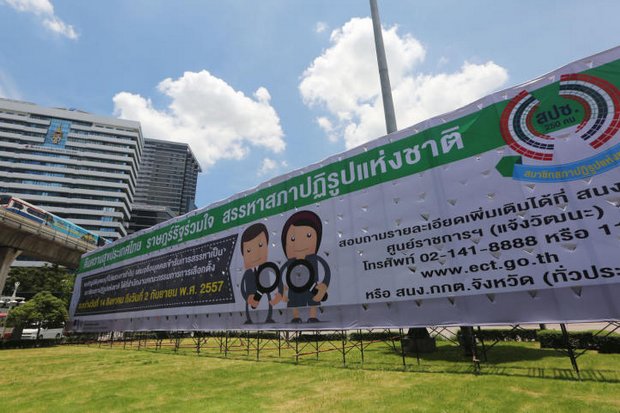
Many readers will have seen images of politicians or public servants displayed on gigantic billboards beside the country's roads. Not everyone will know that we, taxpayers, pay for these images and the messages they convey. They are an example of wasteful spending by the government on advertising and other communications. Mostly the interests they promote are private, not public. And you'll see them on TV, hear them on the radio and see them in the newspapers, as well as at big events.
The financial waste of this sort of thing is only one price the rest of us pay. Another is the customary corruption that accompanies all kinds of government spending. Apart from judging whether there is any real value in such PR campaigns, it is difficult to estimate an appropriate cost for those who do the creative and production work for them. So substantial rake-offs are likely to be part of the deal.
There is another price that we pay for all this, and one that is not so evident but every bit as serious as corruption. And that is the loss of neutrality and independence on the part of the media, resulting from the government's manipulation of the media coverage by means of public advertising spending. The situation is known as "media buying" which goes on in countries such as Argentina, Brazil and Mexico.
In Thailand, public spending on self-promotion has been practiced by governments of every hue. Ironically, the governments themselves do not know how much they spend on this. It is left up to private sector agencies like AC Nielsen who in 2013 reported that the government's PR budget was almost 8 billion baht.
Though the public has started to express concerns about all this, there is no PR budget accountability or law to say what is happening is illegal.
Now, however, the National Reform Council is considering a "State Advertising and Public Relations Act", a so-called "State PR Act", with the support of four media professional organisations, the Anti-Corruption Organisation of Thailand (ACT) and the Thailand Development Research Institute (TDRI).
The draft of this act is similar to PR laws in other countries such as Australia, Canada and the US, which focus on the efficiency and transparency of communications and public relations budgets.
This is how the law would work: First, state agencies would be required to come up with PR plans and budgets which they would then submit to two bodies — a "State Advertising and Public Relations Commission" or "the PR Commission" and Bureau of the Budget for consideration. State agencies would be required to publish their PR plans and budgets during and after campaigns or events on their websites.
Second, this law would prohibit content that contains messages, images or voices of public servants or politicians or any symbol or logo related to a political party.
Third, the public should be informed that the campaign or advertisement is sponsored by "state funds". This would keep taxpayers informed and reduce the promotion of a personal image in this way.
"Media buying" is a more difficult issue to address in law. Nevertheless, in the writer's view, media companies should be required to publish details of any government contracts they win. This would provide people with the information needed to judge the neutrality of news reports, and help small media companies win deals involving government procurement.
As for enforcement, the draft says the "PR Commission" should be comprised of nine people. Six of them would be made up of experts from private and non-profit organisations specialising in advertising and PR, "good governance" and consumer protection. Only three members would be made up of public servants, comprising the director of the Bureau of the Budget, the director-general of the Comptroller-General's Department, and the director-general of the Public Relations Department, while the Bureau of the Budget would act as secretary.
The six members from private and non-profit organisations would be selected by a committee of nine people with diverse qualifications, comprising three top executives from associations involved in the advertising and public relations profession, three executives from three different independent agencies under the constitution, one representing the public servant sector and one academic and one representing civil society.
While the draft of the law is satisfactory, it still needs to be effectively implemented. However, given the workloads of the Bureau of the Budget, as it will have to deal with at least 7,000 local administrations, compared to its human and financial resources currently available, still casts doubt on the law's implementation.
Hopefully, this PR law will set new standards for the use of public money which should be transparent and cost effective. If that is done, self-promotion, masquerading as government information, should disappear once and for all.
Tippatrai Saelawong is a researcher at Thailand Development Research Institute (TDRI). Policy analyses from the TDRI appear in the Bangkok Post on alternate Wednesdays.
